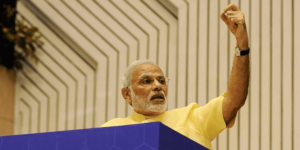has lowered its investment guidance in quick commerce company Blinkit from $400 million to $320 million.
“We have already invested about $150 million in that business so far—our estimate is $320 million for getting that business to break even. In terms of the timeline on Blinkit, we don’t have that kind of visibility that we have on the Zomato business. So, I would not venture into estimating by which quarter we get there,” Zomato CFO Akshant Goyal said during an earnings call on August 2.
The foodtech major is targeting adjusted EBITDA breakeven for its overall business by Q4 of FY 2023 or Q2 of FY 2024.
The EBITDA breakeven will be driven by the company’s food delivery business, the CFO added.
“We have been working on bringing our fixed cost down as well, and I think that is the reason why we have been able to absorb a lot of increases on the salary front etc., which would have otherwise made this number much higher,” said Akshant.
He added, “I think the unallocated cost will remain range bound around the number that you see right now, and the majority of the reduction in adjusted EBITDA for Zomato as a company will come from incremental EBITDA from food delivery going forward and also Hyperpure losses coming down.”
Zomato announced that it will be making a foray into quick commerce with the acquisition of Blinkit in June 2022. At the time, it had valued the business at $626 million.
The online food aggregator reported its Q1 FY 2023 results on August 1, 2022. The company reported losses of Rs 186 crore, down 48% from the year-ago period, and consolidated revenue of Rs 1,414 crore for the period. The company also reported adjusted EBITDA breakeven for its food delivery business.
During the earnings call, the CFO also said that the improvement in revenue rate for its food delivery business was a combination of improved ad sales to its restaurant partners, higher take rates, and higher customer delivery charges.
“The blended or aggregate take rate or rather the implied take rate has also gone up as a function of us driving parity on take rates with some lower take rate restaurants. I wanted to clarify that when we talk of taking rate increase, we are not actually increasing the top end of the take rates for restaurants but rather essentially normalizing take rates at restaurants that could be at lower take rates right now. So, that’s playing out. Ad sales are improving, and we are also seeing improvement in customer delivery charges,” he added.


![Read more about the article [Startup Bharat] This Rajasthan-based NBFC is redefining rural lending, one small-ticket loan and town at a time](https://blog.digitalsevaa.com/wp-content/uploads/2022/05/MalvikaCopyofImageTagging77-1652175319090-300x150.png)







